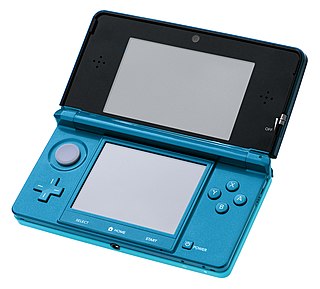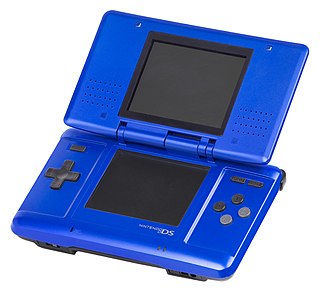 W
WThe Game Boy Advance (GBA) is a 32-bit handheld game console developed, manufactured and marketed by Nintendo as the successor to the Game Boy Color. It was released in Japan on March 21, 2001, in North America on June 11, 2001, in the PAL region on June 22, 2001, and in mainland China as iQue Game Boy Advance on June 8, 2004. The GBA is part of the sixth generation of video game consoles. The original model does not have an illuminated screen; Nintendo addressed that with the release of a redesigned model with a frontlit screen, the Game Boy Advance SP, in 2003. A newer revision of the redesign was released in 2005, with a backlit screen. Around the same time, the final redesign, the Game Boy Micro, was released in September 2005.
 W
WThe Game Boy Advance SP, released in Japan on February 14, 2003, is a sixth-generation handheld game console developed, released, and marketed by Nintendo that served as an upgraded version of the original Game Boy Advance. The "SP" in the name stands for "Special". It is the penultimate console in the Game Boy Advance family before the Game Boy Micro, released in September 2005. The Game Boy Advance line was followed by the Nintendo DS family, starting with the release of the original Nintendo DS in November 2004.
 W
WThe Game Boy Micro is a handheld game console developed and manufactured by Nintendo. It was first released in Japan on September 13, 2005 as a smaller, lighter redesign of the Game Boy Advance. The system is the last console in the Game Boy line, alongside the AGS-101 model of the Game Boy Advance SP. Unlike its predecessors, the Game Boy Micro lacks backward compatibility for original Game Boy and Game Boy Color games.
 W
WThe iQue Player is a home video game console that was manufactured by iQue, a joint venture between Nintendo and Taiwanese-American scientist Wei Yen after China had made claims of banning video games. The system's Chinese name was Shén Yóu Ji (神游机), literally "Divine Gaming Machine". Shényóu (神游) serves a double entendre because the term also means "to make a mental journey". Although the console was never released in any English-speaking countries, the name "iQue Player" appears in the console's instruction manual. The console itself takes the form of the controller and plugs directly into the television. A box accessory is available that allows multiplayer gaming. It was only released in mainland China, as the console's unusual game distribution method is an attempt to curb game piracy in that region.
 W
WThe Nintendo 3DS is a handheld game console produced by Nintendo. It was announced in March 2010 and unveiled at E3 2010 as the successor to the Nintendo DS. The system features backward compatibility with older Nintendo DS video games. As an eighth-generation console, its primary competitor was Sony's PlayStation Vita.
 W
WThe Nintendo DS is a handheld game console produced by Nintendo, released globally across 2004 and 2005. The DS, an initialism for "Developers' System" or "Dual Screen", introduced distinctive new features to handheld games: two LCD screens working in tandem, a built-in microphone and support for wireless connectivity. Both screens are encompassed within a clamshell design similar to the Game Boy Advance SP. The Nintendo DS also features the ability for multiple DS consoles to directly interact with each other over Wi-Fi within a short range without the need to connect to an existing wireless network. Alternatively, they could interact online using the now-defunct Nintendo Wi-Fi Connection service. Its main competitor was Sony's PlayStation Portable during the seventh generation of video game consoles.
 W
WThe Nintendo DS Lite is a dual-screen handheld game console developed and manufactured by Nintendo. It is a slimmer, brighter, and more lightweight redesign of the original Nintendo DS. It was announced on January 26, 2006, more than a month before its initial release in Japan on March 2, 2006 due to overwhelming demand for the original model. It has been released in Australia, North America, Europe, New Zealand, Singapore, and defined regions in South America, the Middle East, and East Asia. As of March 31, 2014, the DS Lite had shipped 93.86 million units worldwide.
 W
WThe Nintendo DSi is a dual-screen handheld game console released by Nintendo. The console launched in Japan on November 1, 2008, and worldwide beginning in April 2009. It is the third iteration of the Nintendo DS, and its primary market rival is Sony's PlayStation Portable (PSP). The fourth iteration, entitled Nintendo DSi XL, is a larger model that launched in Japan on November 21, 2009, and worldwide beginning in March 2010. Development of the DSi began in late 2006, and the handheld was unveiled during an October 2008 Nintendo conference in Tokyo. Consumer demand convinced Nintendo to produce a slimmer handheld with larger screens than the DS Lite. Consequently, Nintendo removed the Game Boy Advance (GBA) cartridge slot to improve portability without sacrificing durability.